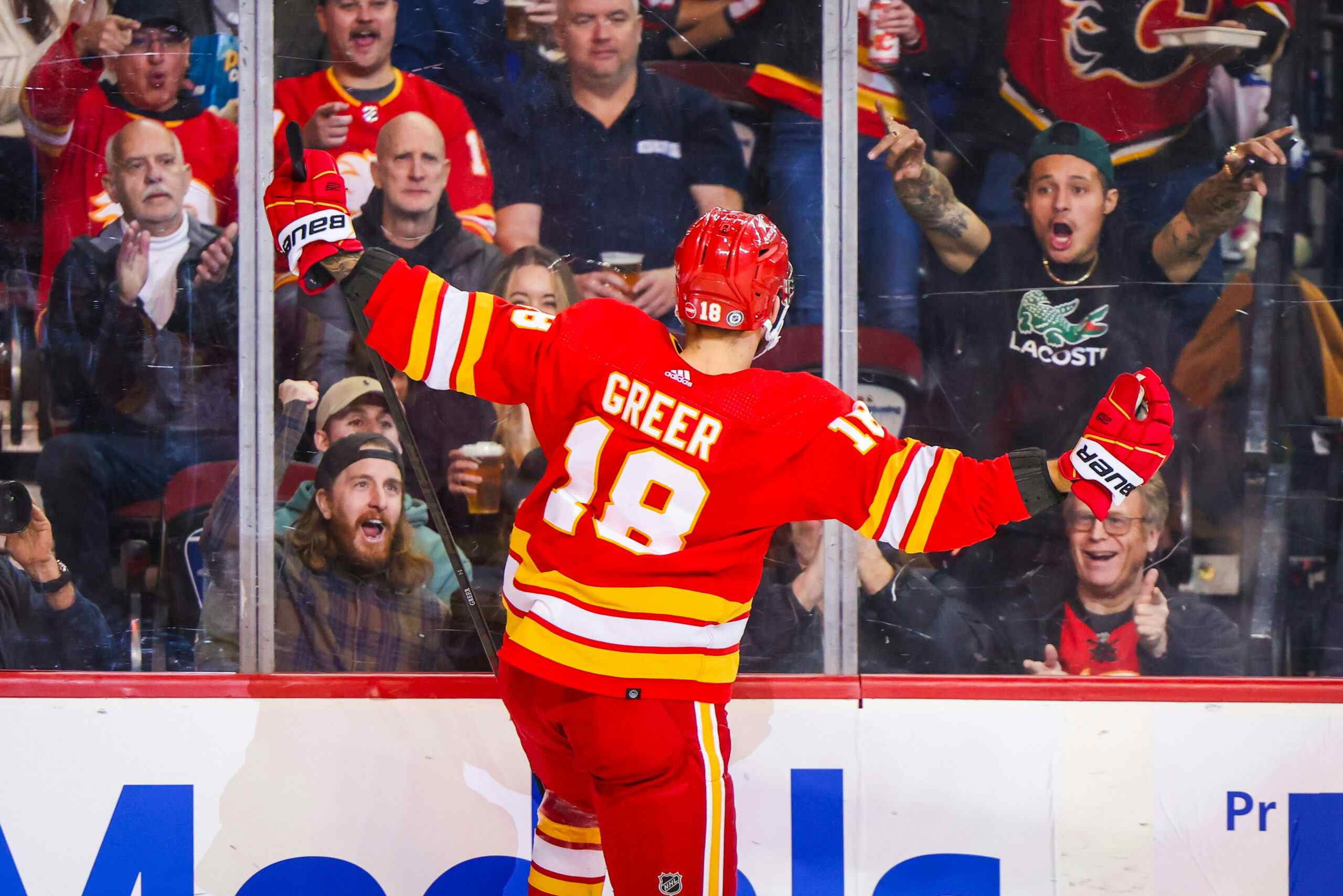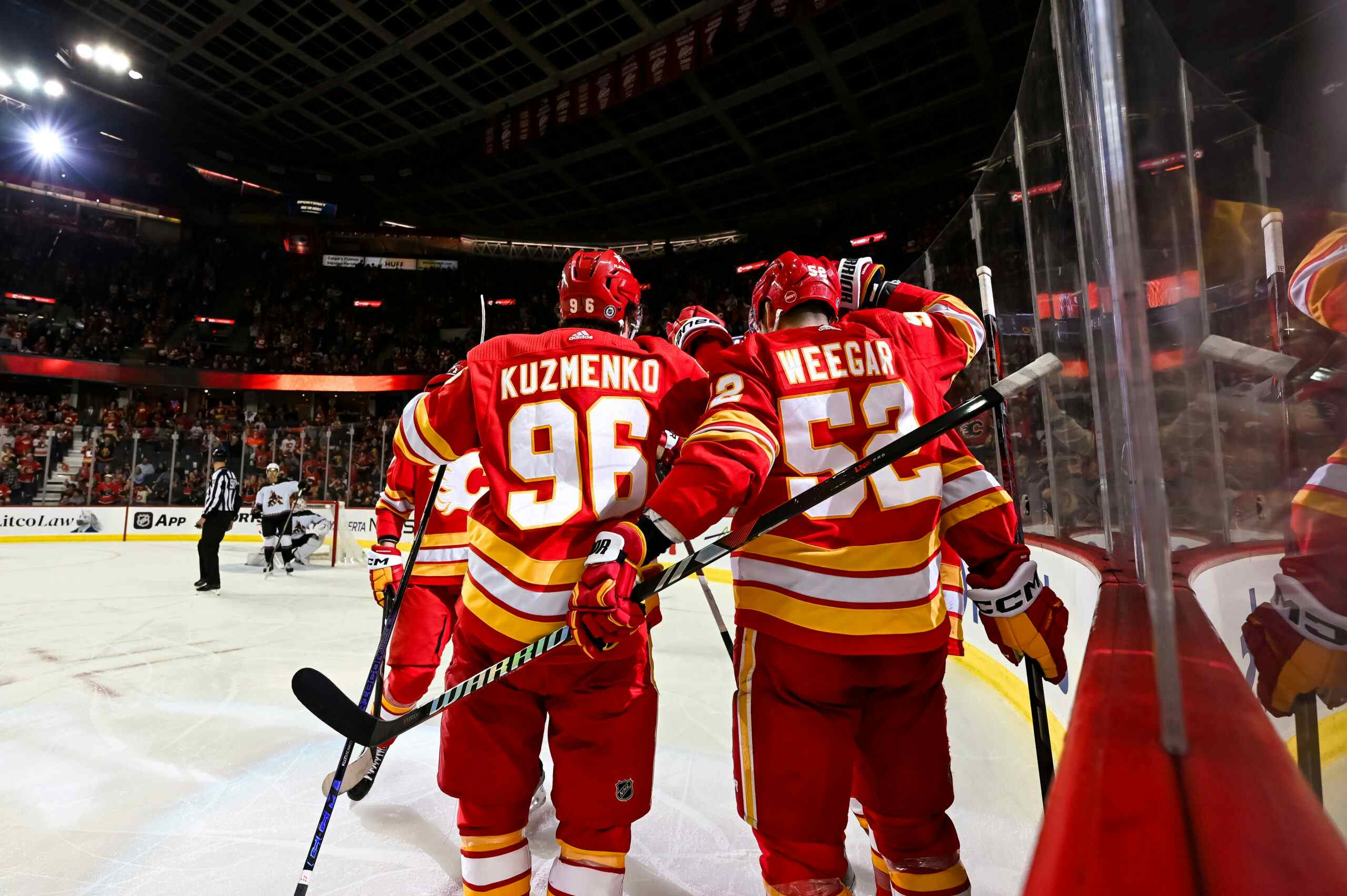Joe Colborne’s next contract
By Ari Yanover
8 years agoA number of Flames will need new contracts for next season, and none are more important than Johnny Gaudreau and Sean Monahan. They aren’t the only impending restricted free agents having impressive seasons, though: Joe Colborne, who became an NHL regular at the same time as Monahan, is an RFA as well.
Colborne just got his 100th career point against the Edmonton Oilers. His 18 goals and 39 points so far this season are new career highs. At 26 years old, though, he’s a bit older. He’s carried a $1.275 million cap hit the past two seasons. Should he get much more?
A career season
Let’s focus on Colborne’s last two years playing: enough time to get the kinks out of his rookie season, and these two seasons cover the span of Colborne’s current contract.
| Season | Goals | Assists | Points | SH% | ATOI | 5v5 CF% | 5v5 CF% Rel | 5v5 OZS% | 5v5 PDO |
| 2014-15 | 8 | 20 | 28 | 11.9 | 15:25 | 42.89 | -1.78 | 31.72 | 103.65 |
| 2015-16 | 18 | 21 | 39 | 18.6 | 15:11 | 47.99 | -0.57 | 28.09 | 99.92 |
There are quite a few things to like here. His offensive production has gone up, and he hasn’t needed a boost in ice time to accomplish that. Hs possession rates have gone up as well, even as his offensive zone starts have dropped. His PDO isn’t otherworldly; in fact, it’s gone down some, although that likely has more to do with the Flames’ goaltending cratering than anything else.
There is still a major, major, major red flag here, though: Colborne’s shooting percentage jumped up almost seven points.
If there’s anything last season should have taught us, it’s that we cannot expect this to last. All it takes is one look at Lance Bouma, who went from .44 points per game with a career-high 15.4% shooting percentage to .16 points per game with a 4.3% shooting percentage. (Bouma had a .19 points per game rate the year before his career season.)
As much as injuries have impacted Bouma’s season, he’s still played over half of the year, and is still scoring about where we would have expected to be before that career season.
Bouma already got a three-year, $2.2 million AAV contract out of his career season, but the Flames may not be able to afford taking a similar chance on Colborne.
The comparison is somewhat unfair – Colborne looks to be a useful enough NHLer in his own right, and even if he flops, will still probably provide better value than Bouma – but should we be expecting Colborne to encroach upon 20 goals next season? Probably not, if history has taught us anything.
Cap hit comparables
Forwards with about 28 points this season, not on ELCs but on RFA deals, include:
- Calle Jarnkrok ($735K cap hit, 18 points the season before contract was signed)
- Jimmy Hayes ($2.3M cap hit, 35 points the season prior)
- Brandon Pirri ($925K cap hit, 14 points the season prior)
- David Desharnais ($3.5M cap hit, 28 points the season prior [lockout year, pro-rated to 48 points over an 82-game season])
- Jesper Fast ($950K cap hit, 14 points the season prior)
- Antoine Roussel ($2M cap hit, 29 points the season prior)
- Sven Baertschi ($900K cap hit, six points the season prior)
- Michael Raffl ($1.1M cap hit, 22 points the season prior)
- Peter Holland ($775K cap hit, 11 points the season prior)
- Dale Weise ($1.025M cap hit, 16 points the season prior)
Removing Desharnais from the equation, who appears to be the only major outlier among this group, Colborne’s offensive performance last season – with a more repeatable shooting percentage – hints he should receive a cap hit of roughly $1.2 million: basically, where he’s at now.
Forwards with about 39 points this season, not on ELCs but on RFA deals, include:
- Jean-Gabriel Pageau ($900K cap hit, 19 points the season before contract was signed)
- Alex Killorn ($2.55M cap hit, 41 points the season prior)
- Chris Kreider ($2.475M cap hit, 37 points the season prior)
- Jamie McGinn ($2.95M cap hit, 38 points the season prior)
- Brock Nelson ($2.5M cap hit, 42 points the season prior)
- Sean Couturier ($1.75M cap hit, 39 points the season prior)
These contracts average out to about a $2.2 million cap hit. Take out Pageau, and it’s $2.4 million.
That’s a difference of about $1-$1.2 million, all based on a year that should be taken with a grain of salt; a year worthy of scepticism; a year that we have reason to believe will not repeat itself.
That extra million could cut itself in rather tight in this impending cap crunch, but it should be manageable. Here’s the problem: if you don’t expect it to repeat, then you don’t give out term.
Bouma on a $2.2 million cap hit this season doesn’t hurt nearly as much if he doesn’t carry the number for the next two seasons as well. If he had a contract coming up after this season, there’s no chance he would get that figure; doesn’t matter, though, because it’s the one he now carries.
The Flames should have essentially two offers to Colborne for his extension. Does he deserve a raise? Based on this season, yes. But it should go like this: he gets a fair jump, say $1 million, and carries it for just one season, during which it’s on him to prove this season was not a fluke year. That, or he takes a modest raise, say $500K, over a two year period; maybe even $250K over three years. Longer contracts, but at less risk to prove himself not worth it as the years go on.
Either he gets term, or he gets money. Not both.
It isn’t paying Gaudreau $8 million that gets the Flames into cap trouble: it’s doing stuff like paying Colborne and Bouma a combined $4.5 million that does. Those lesser contracts add up. A player of Gaudreau’s caliber is worth the cap hit; players like Bouma and Colborne, who provide evidence their career seasons aren’t representative of their overall abilities, less so.
Look no further than the cap structure of the Flames’ defence. There’s no need to repeat that in the bottom six, especially when it’s easily avoidable.
Recent articles from Ari Yanover





